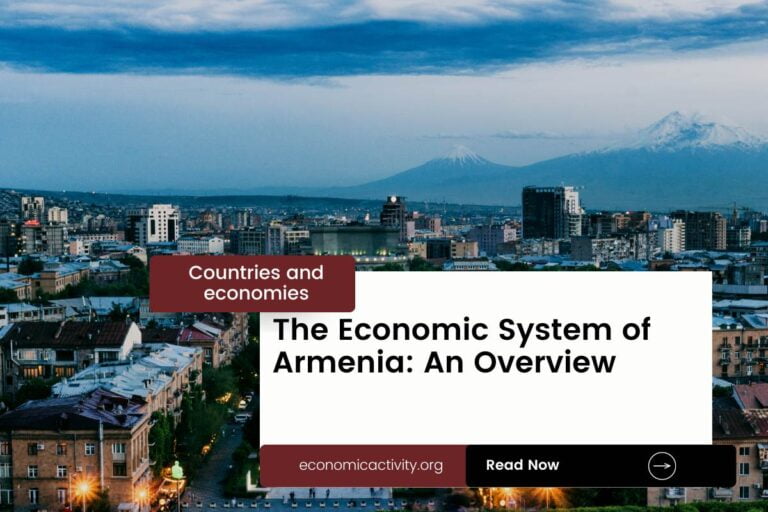Iraq, with a population of 44,496,122, is ranked 34th in the world, just behind Algeria. Located in the Middle East, Iraq covers a total area of 435,050 square kilometers, ranking 58th globally, trailing behind Morocco.
Iraq’s economic position in 2022 showcases a GDP of 264,182,173,793.103 USD, ranking 47th globally. It falls behind Finland, which has a GDP of 282,649,838,009.729 USD. The GDP per capita for Iraq in 2022 is 5,937.195 USD, placing it at the 104th position worldwide.
Iraq lags behind Jamaica, with a GDP per capita of 6,047.216 USD, ranking 46th. Despite its challenges, Iraq continues to work towards economic growth and stability in the global market.
What are the economic activities of Iraq?
- Primary activities: 3.3% of GDP.
- Secondary activities: 51% of GDP.
- Tertiary activities: 45.8% of GDP.

Primary Sector of Iraq
Iraq’s primary sector, particularly agriculture, thrives due to its favorable climate and abundant natural resources. With 21.7% of the country’s land dedicated to agriculture, Iraq produces a diverse range of products including wheat, dates, tomatoes, maize, watermelons, grapes, potatoes, milk, cucumbers/gherkins, and eggplants.
Despite contributing 3.3% to the GDP, agriculture remains vital to the economy. The variety of crops and animal products not only sustains the sector but also provides food security and livelihoods for many Iraqis.
The country’s diverse geology provides abundant natural resources, including petroleum, natural gas, phosphates, and sulfur. These resources drive the economy, with petroleum and natural gas being major exports, contributing significantly to the country’s revenue and economic stability.
Iraq’s gas production of 1002 million m³ in 2020 ranks 68th globally, further solidifying its position as a key player in the global energy market.
Secondary Sector of Iraq
What is the secondary sector or what are secondary activities?
The secondary sector involves industries that transform raw materials into finished products for consumption. In Iraq, main industrial products include petroleum, chemicals, textiles, leather, construction materials, food processing, fertilizer, and metal fabrication/processing.
In 2023, manufactures accounted for a small percentage of Iraq’s total exports, indicating their limited significance in driving the country’s export economy.
Tertiary sector of Iraq
What is the tertiary sector or what are tertiary activities?
The tertiary sector in Iraq encompasses various services where individuals provide knowledge and time to enhance productivity and meet needs. This sector involves intangible goods such as advice, expertise, and attention, catering to both consumer and business-to-business services. Key tertiary activities in Iraq include healthcare and medical care, education and training, banking and finance, communication and information exchange, transportation and logistics, and security and protection.
In particular, Iraq’s tourism industry plays a crucial role in its economy. With an annual arrival of [tourist arrival/population ratio] tourists, popular destinations like the ancient city of Babylon and the Mesopotamian marshlands attract visitors from around the world, contributing significantly to the country’s GDP through tourism-related services and infrastructure development.
Another example of tertiary economic activity is the mobile cellular economic sector, with approximately 44 million subscriptions, supporting technological growth by enhancing communication and fostering digital innovation across various industries.
Military Activities and Economic Sectors of Iraq
The military is a good example of many economic activities. In the primary sector, resources are extracted for military use. The secondary sector involves manufacturing military equipment. The military also provides services, which is part of the tertiary sector. Research and development for new technology falls under the quaternary sector. Lastly, high-level decision-making and strategy are part of the quinary sector.
In 2023, Iraq’s military expenditure was 5,108.4 million US dollars, which is about 1.67% of its GDP. The active military force has 193,000 personnel, which means there are 8.5 active military members for every 1,000 people in the country.
International Trade of Iraq
Import Activities of Iraq

The import activities of Iraq are of high importance, with total imports in 2023 reaching $67 billion, accounting for 25.40% of the country’s GDP.
Iraq’s import activities are diverse, with key partners like UAE, China, Turkey, India, and South Korea. Major import commodities include refined petroleum, broadcasting equipment, cars, jewelry, and garments.
Exports Activities of Iraq

Iraq’s export activities play a crucial role as they account for 46.56% of its GDP, indicating high importance. In 2023, total exports reached $123 billion, driving economic growth and stability.
Iraq mainly exports crude petroleum, refined petroleum, gold, petroleum coke, and natural gas. Its top export partners are India, China, US, South Korea, and Greece. India and China are the major importers, accounting for 32% and 28% of Iraq’s exports, respectively.
Iraq economy challenges in 2024
In 2024, Iraq faces challenges due to its oil-dependent economy. Fluctuating oil prices affect fiscal stability. Corruption, informal markets, and political fragility persist. Import dependency hinders growth despite rising public confidence in the economy.



Leave a Reply